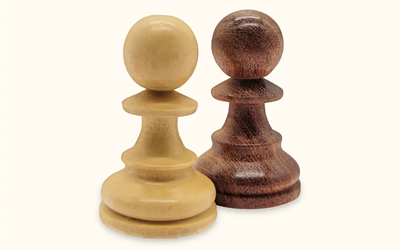
A4: the antichess mistake?
Never been a fan of what is played most commonly. Instead I found my joy in the a4 opening. Let's break this opening down and see what it has to offer.It's somewhat of an opening with a psychological approach to it. In the blink of an eye you are left with a pawn completely out of position. A mistake, the engine would say. Or perhaps too brilliant?

Why is it brilliant?
1500-1800 rated: it is a distraction to the board. That puny little pawn all alone on that a6-square... At first glance it seems that this position could be exploited by getting the black king to b7. However there are a couple of traps that white has that catch the unprepared off-guard. It's an effective opening to get an easy victory against a lower rated player as he falls for the traps that white can set up. I show you one below:
This is a trap we commonly see in lower rated games. The knight moves up the board while black thinks he is safe to move the king towards the pawn. However in doing so he starts to limit the maneuverability of the rook.
1800-2000 rated: We often see here that players don't fall for the cheeky trap shown earlier (or any other trap, for that matter). Instead, with the knight on a3. Black comes with c3. An excellent defense one might say, or is it? Ba5 is an excellent counter play which comes with a handful of problems for black. He is left with a single option to continue the position: e5. The study provided in this blog explains how to win the position. And even so. e5 isn't an easy move to spot. Black might very well already blunder the position after Ba5.

2000+: Traps rarely work here anymore. Instead we must focus on developing our pieces faster than black. To make sure of that we must consult a proper study of this line.
In higher rated a4 games I commonly end up in this position:
So what does this position bring me in high rated games? Victory, mostly. It looks a lot like Watkins' e3, however there is a slight problem: Stockfish says the position is slightly favorable for black. How are we supposed to win here? It's hard to explain. There are a couple of tricky continuations that lure black into losing positions. I commonly see black go with Qg5/h4 which are instantly losing. I made a chapter covering how to win that. I also see black commonly develop his knight to e7 or h6. From here I could go on a rant to explain everything. But I will let the study do the talking.
What should you know for this line?
A4 midgame play sets up for quite a few traps . a4 is not commonly played and this you should use to your advantage. Occasionally a position is achieved which looks drawish. However the position is solved as long as you play the correct intermediate that is very obscure. Calculating it probably takes too much time. So instead study the chapters: Knight trap defense, Queen race, H-file defense and g5, Nh6 blunder.
Yes but, hold on, what if...?
Excellent question! What if the player makes that move that no one ever uses? Well, moves that are never used, are never used for a reason. They are bad. However there are a couple of moves that could deny white everything he thought he prepared for. I want to personally thank @tolius for this one. He found a weakness in my preparations and bested me a good couple of times. So after a4 tolius came up with Nh6. I tried various things. And lost all of them. So the study has a special chapter dedicated to tolius! One other cheeky move that black can come up with is simply a6. I have another chapter that covers this line.
Epilogue
With this blog post and accompanying study I hope I have aroused the interest to give this opening a try. The best antichess players of the community have seen more than enough e3 Watkins stuff and can hardly be surprised anymore. I hope this is of use and that you can prepare a deadly game to catch the best of the best off-guard!
More blog posts by ZendiScar

IAF Antichess World Championship 2024 date has been determined & more news!
Read all about the 3rd edition of the IAF ACWC 2024 in this blog.
G3: a take on what I despise.
A take on what it's like to play against g3 in antichess.
IAF Antichess World Championship: News & Survey results
In this blog we will discuss survey results and share the latest news about the 3rd edition of this …